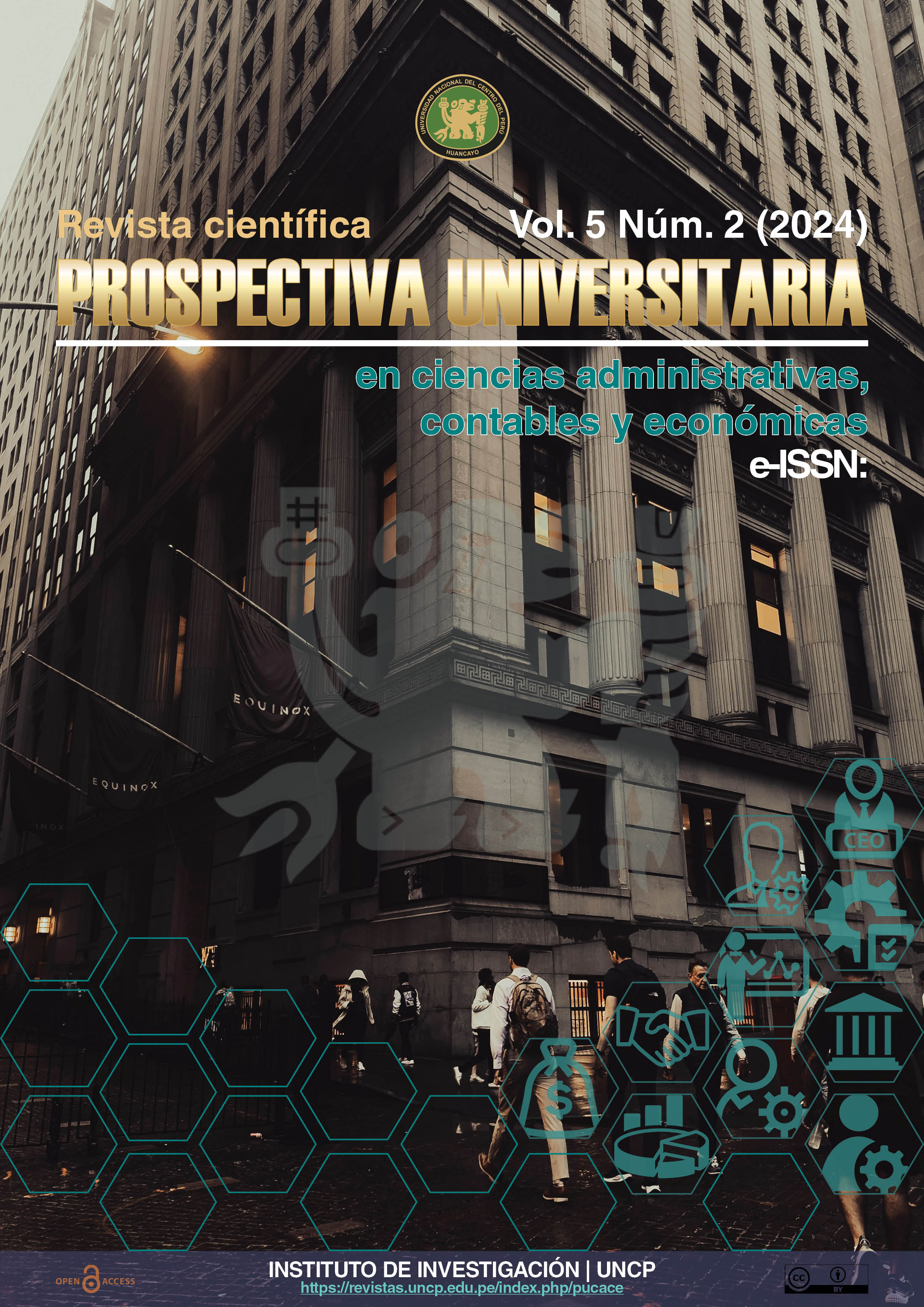Evaluation of the Impact of the Cuna Más program in reducing chronic childhood malnutrition in Peru, 2014-2019
DOI:
https://doi.org/10.26490/pucace.v5i2.2416Keywords:
Cuna Más, entropic balance, chronic malnutrition, child, program, policy, food, nutritionAbstract
Chronic child undernutrition represents a critical public health challenge, with adverse effects that manifest themselves from the earliest stages of life. Despite government efforts, rates persist, especially in vulnerable communities. Aim: This study evaluates the impact of the Cuna Más program on the reduction of chronic child undernutrition in Peru during the period 2014-2019. Methods: Using a comparative methodological approach, entropic balance, propensity score matching (Propensity Score Matching) and the Difference-in-Differences technique were combined. The data came from the Demographic and Family Health Survey (DHS). The entropic balance ensured homogenization of the samples between the treatment and control groups. Results: The results indicate that Cuna Más reduced anemia by 36.4% and increased hemoglobin levels by 24.961% under this approach, surpassing other methods (23.4% and 8.358%, respectively). In addition, significant improvements were observed in height/age (75.85% vs. 59.72%) and Body Mass Index (BMI) (43.05% vs. 21.33%). Variables such as maternal education and medical visits showed statistical significance. Conclusions: The Cuna Más program has had a positive and significant impact on the reduction of chronic child malnutrition, highlighting the need to continuously strengthen and evaluate public policies aimed at improving child health and development in vulnerable populations.
References
Abeyá, E. O. (2016). Una evaluación crítica de los programas alimentarios en Argentina. Salud Colectiva, 12(4), 589. https://doi.org/10.18294/sc.2016.935
Cavero-Arguedas, D., Cruzado, V., & Cuadra-Carrasco, G. (2017). Los efectos de los programas sociales en la salud de la población en condición de pobreza: Evidencias a partir de las evaluaciones de impacto del presupuesto por resultados a programas sociales en Perú. Revista Peruana de Medicina Experimental y Salud Pública, 34(3), 528. https://doi.org/10.17843/rpmesp.2017.343.3063
Gajate, G., & Inurritegui, M. (2003). El impacto del Vaso de Leche sobre el nivel de nutrición infantil. Economía y Sociedad: Transferencias intergubernamentales, sistema privado de pensiones, programas sociales. https://cies.org.pe/wp-content/uploads/2016/07/gajateinurritegui.pdf
Guerrero, G., León, J., & MIDIS. (2017). Evaluación de Impacto del Servicio de Cuidado Diurno del Programa Nacional Cuna Más: Resultados finales. Ministerio de Desarrollo e Inclusión Social. https://repositorio.minedu.gob.pe/handle/20.500.12799/6357
Hwang, U., Dresden, S. M., Vargas-Torres, C., Kang, R., Garrido, M. M., Loo, G., Sze, J., Cruz, D., Richardson, L. D., Adams, J., Aldeen, A., Baumlin, K. M., Courtney, D. M., Gravenor, S., Grudzen, C. R., Nimo, G., Zhu, C. W., Geriatric Emergency Department Innovations in Care Through Workforce, Informatics, and Structural Enhancement (GEDI WISE) Investigators, Abraham, G., … Sumberg, D. (2021). Association of a Geriatric Emergency Department Innovation Program With Cost Outcomes Among Medicare Beneficiaries. JAMA Network Open, 4(3), e2037334. https://doi.org/10.1001/jamanetworkopen.2020.37334
Juárez, A. (2020). Programa Vaso de Leche en la calidad de vida del beneficiario del Asentamiento Humano Hijos de Ventanilla, Callao, 2019 [Master Thesis, Universidad César Vallejo]. https://repositorio.ucv.edu.pe/handle/20.500.12692/47430
Osorio, A. M., Romero, G. A., Bonilla, H., & Aguado, L. F. (2018). Socioeconomic context of the community and chronic child malnutrition in Colombia. Revista de Saúde Pública, 52, 73. https://doi.org/10.11606/S1518-8787.2018052000394
Reyes, S. E., Contreras, A. M., & Oyola, M. S. (2019). Anemia y desnutrición infantil en zonas rurales: Impacto de una intervención integral a nivel comunitario. Revista de Investigaciones Altoandinas - Journal of High Andean Research, 21(3), 205-214. https://doi.org/10.18271/ria.2019.478
Sanchez, A., Melendez, G., & Behrman, J. (2016). The Impact of the Juntos Conditional Cash Transfer Programme in Peru on Nutritional and Cognitive Outcomes: Does the Age of Exposure Matter? https://www.grade.org.pe/en/publicaciones/the-impact-of-the-juntos-conditional-cash-transfer-programme-in-peru-on-nutritional-and-cognitive-outcomes-does-the-age-of-exposure-matter/
Segarra, J. X., Lasso, S. R., Chacón, K. L., Segarra, M. T., & Huiracocha, L. (2016). Estudio Transversal: Desnutrición, Anemia y su Relación con Factores Asociados en Niños de 6 a 59 Meses, Cuenca 2015. Revista Médica del Hospital José Carrasco Arteaga, 8(3), 231-237. https://doi.org/10.14410/2016.8.3.ao.39
Vizuet, N. I., Shamah, T., Gaona, E. B., Cuevas, L., & Méndez, I. (2016). Adherencia al consumo de los suplementos alimenticios del programa PROSPERA, en la reducción de la prevalencia de anemia en niños menores de tres años en el estado de San Luis Potosí, México. Nutrición Hospitalaria, 33(4). https://doi.org/10.20960/nh.370
Xu, L.-B., Mei, T.-T., Cai, Y.-Q., Chen, W.-J., Zheng, S.-X., Wang, L., Chen, X.-D., & Huang, Y.-S. (2022). Correlation Between Components of Malnutrition Diagnosed by Global Leadership Initiative on Malnutrition Criteria and the Clinical Outcomes in Gastric Cancer Patients: A Propensity Score Matching Analysis. Frontiers in Oncology, 12, 851091. https://doi.org/10.3389/fonc.2022.851091
Downloads
Published
Issue
Section
License
Copyright (c) 2024 Juan Carlos Pérez Ticse, Marco Antonio Arroyo Yupanqui, Victor Bullón García, Melissa Lizbeth Perez Ticse

This work is licensed under a Creative Commons Attribution 4.0 International License.
![IconJournalPUCACE [ENG] by Edgar Julian-Laime®](https://revistas.uncp.edu.pe/public/journals/31/pageHeaderLogoImage_en.png)






